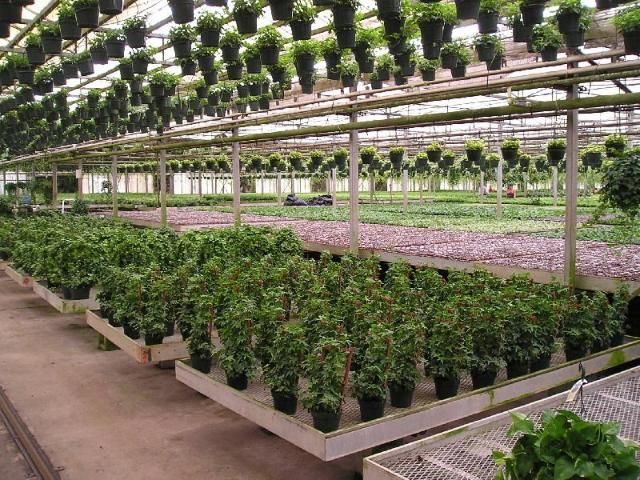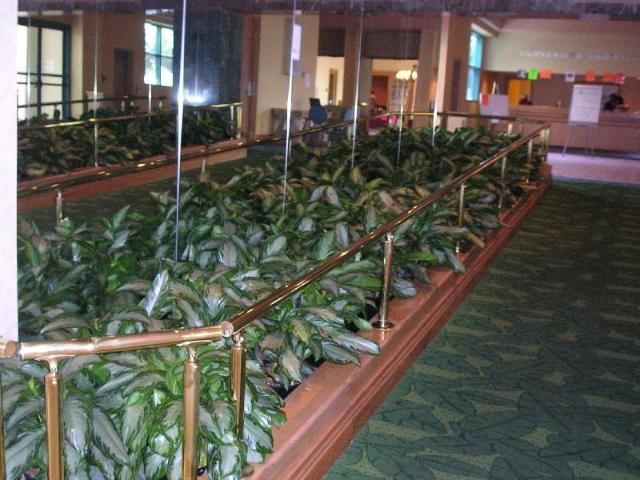Florida is now the leading state in the production of foliage plants, accounting for more than 55% of the national wholesale value since the 1960s(Chen et al. 2002). Florida growers have cultivated Boston fern (Nephrolepis exaltata) since 1912. Heartleaf philodendron vine was introduced into production in Florida in 1928. Chinese evergreen (Aglaonema modestum) and rubber plant (Ficus elastica) were commercially grown in Florida by the 1930s. A large upswing in foliage plant production occurred during the back-to-earth, back-to-nature movements of the 1970s. Innovative plant breeding techniques developed during the 1980s and new tissue-culture technology enabling faster propagation fueled the market as new varieties became available through the turn of the millennium (Table 1). The wholesale value of foliage plants in the U.S. rose from $29 million in 1969 to $585 million in 2001.
Plant acquisition and introduction, coupled with the selection of mutations and hybrid development keeps the foliage market fresh and profitable. Foliage plants, if defined literally, would include all plants grown for their attractive leaves rather than for their flowers or fruits. In general horticultural terms, however, foliage plants are those plants with attractive foliage and/or flowers that are produced in containers in greenhouses and are used primarily for interior decoration.
Currently, more than 500 plant species with various forms, colors, textures, and styles are grown as foliage plants. Most of these plants are indigenous to either the tropics or the subtropics.
The tropics have a continuous growing season with stable warm temperatures, an abundant water supply, and 12-hour day-length. Tropical foliage plants in their natural habitats grow under the tree canopy on the shaded forest floor. Some may grow as climbing vines or even live in trees as epiphytes. Characteristics of all such foliage plants include their tolerance of low available light levels, sensitivity to chilling temperatures, day neutral photoperiod response, and lack of dormancy.
In the subtropics, summer is hot and humid but winter may bring frost. Foliage plants originating from this climate are more adaptable to heat, drought, and chilling temperatures, and may also show winter dormancy. Desert plants, such as succulents and cacti, have unique foliage that has been evolved for coping with heat and drought stresses.
A few foliage plants are native to the temperate climate. English ivy (Hedera helix) is probably the most significant example. The juvenile forms of ivy varieties have been widely used as potted or hanging-basket foliage plants (Figure 1).

The use of plants for indoor decoration began at least 3,500 years ago when Sumerians and ancient Egyptians began growing small trees in containers. Historical documents show that the ancient Chinese expanded the variety of plants used for indoor decoration. Wealthy merchants of Florence, Genoa, and Venice collected plants from their travels to the Orient in the fifteenth century. Plant collectors in northern Europe also imported plants from Asia Minor and the East Indies. A desire for exotic plants developed among the aristocracy of France and England by the middle of the sixteenth century. Many royal wealthy persons in Europe constructed orangeries and conservatories in the seventeenth century. By the following century, an estimated 5,000 species of exotic plants had been brought into Europe (Smith and Scarborough 1981). In the second half of the nineteenth century, foliage plants were gaining even more popularity in Europe, and the grand drawing rooms of Victorian houses filled up with palms and ferns (Lowe 1861).
Around the late 1890s, foliage plants were generally brought into commercial production for the middle and upper class households. Shiploads of foliage plants from Europe were sold to greenhouse growers in the northeastern United States. In less than two decades, however, the production of foliage plants shifted to California and Florida because of their more favorable climate conditions. The Californian industry began with Kentia palm (Howea forsteriana) and pothos (Epipremnum aureum) in 1920s. Heartleaf philodendron vine (Philodendron scandens oxycardium) and Norfolk Island pine (Araucaria bidwilli) became foliage industry staples in the 1940s (Smith and Scarborough 1981).
Foliage plants enhance the interior environment and fulfill a psychological need (Manaker 1997) by bringing beauty and comfort to our surroundings (Figure 2). Furthermore, foliage plants have been shown to be capable of purifying indoor air and have been demonstrated to remove 87% of pollutants such as formaldehyde and benzene from sealed chambers within 24 hours (Wolverton 1989). The beautification of interior environments and purification of indoor air have become key elements in promoting the use of foliage plants.

References
Chase A.R. 1997. Foliage Plant Diseases: Diagnosis and Control. APS Press, St. Paul, MN.
Chen, J., R.J. Henny, and D. B. McConnell. 2002. Development of new foliage plant cultivars. p. 446–452. In: Trends in New Crop and New Uses, J. Janick, ed. Timber Press, Portland, OR.
Lowe E.J. 1861. Beautiful Leaved Plants. Groombridge and Sons, London.
Manaker G.H. 1997. Interior plantscapes: Installation, maintenance, and management, 3rd ed. Prentice-Hall, Upper Saddle River, NJ.
Smith C.N., and E.F. Scarborough. 1981. Status and development of foliage plant industries. p. 1–39. In: Foliage Plant Production, J.N. Joiner, ed. Prentice-Hall, Englewood Cliffs, NJ.
USDA (United States Department of Agriculture). 2002. Floriculture Crops 2000 Summary. Washington, DC.
Wolverton B.C. 1989. Interior landscape plants for indoor air pollution abatement. NASA/ALCA Final Report, Plants for Clean Air Council. Davidson, MD.